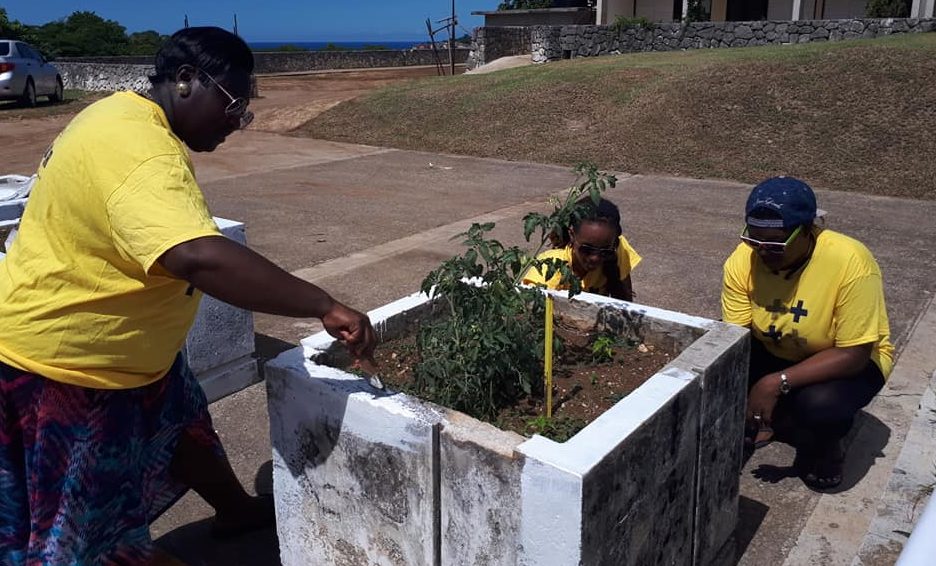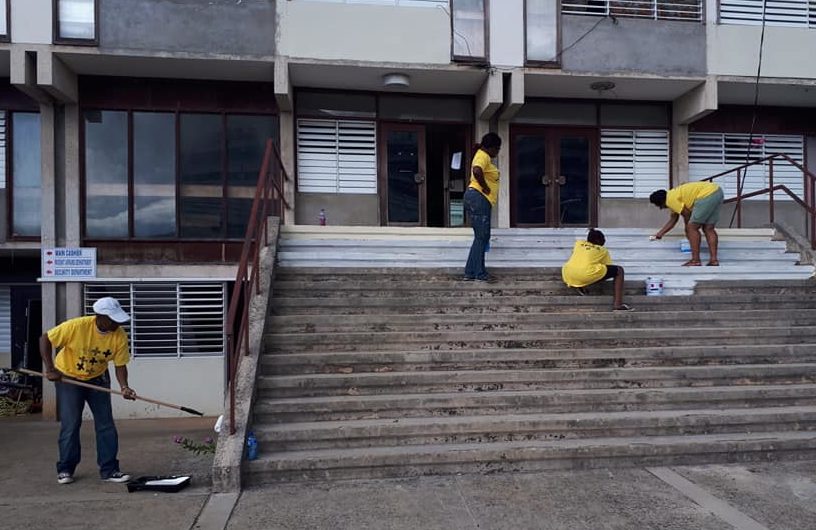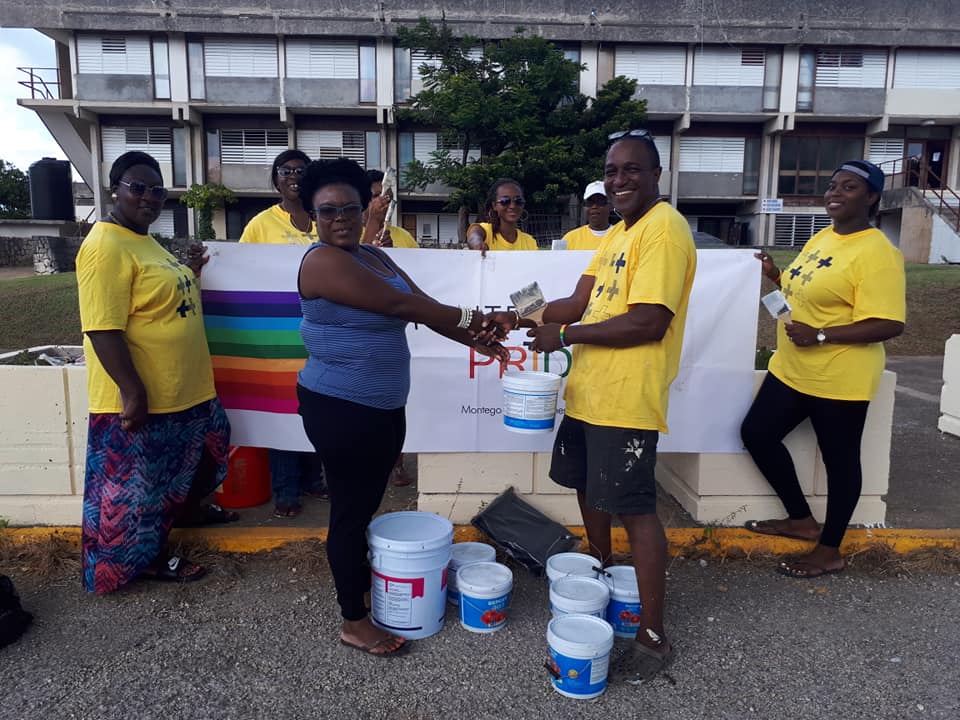How to fight homophobia: A partial success story from Jamaica
Maurice Tomlinson of Jamaica and Canada has been involved in…
Montego Bay Pride demonstrated how to fight homophobia through public service. In painting a local hospital, LGBT volunteers achieved partial success.

There he was. As menacing as I remembered. My stomach was immediately in knots at the sight of this burly security guard. I forced myself to breathe calmly and not display any fear. After all, I was at the Cornwall Regional Hospital in Montego Bay to offer them a service.
As coordinator of Montego Bay Pride, the planning committee had tasked me to identify a social justice project as part of our week of activities. With the help of an LGBT community member who works at the hospital we had settled on painting one section of the building that had been neglected for years.
Initially we had planned to return to paint the Freeport police station that we had started last year, but that plan was cancelled at the last minute by police headquarters.
Next, a proposal to paint a new bathroom at my former high school was initially accepted and all the painting supplies were bought but then two days before work was scheduled to start we were told that “plans had changed”. Apparently some of the old boys were upset that a bunch of gays had the audacity to want to paint their school.

That rejection felt very personal because the new bathroom was located next to my first classroom and I reflected on how much homophobic bullying and awkward moments I would have been spared had that facility existed during my confused high school days.
The rejection was also personal because some of the persons who most strenuously objected to our painting were members of the graduating class for which was I valedictorian. Some of my colleagues had assured me that this group had become less homophobic after the 30+ years since our graduation. But, I had my doubts and, sadly, I was proved correct. I had long sworn not to return to the school once I left. The response to the painting project shows why I was right to feel that way. The rejection triggered very painful memories.
And the hospital was no different. Earlier in the year I had visited my mother there while she had an extended stay for a serious health issue. And every day while I waited outside her ward for visiting hours to begin, this same guard would launch into a homophobic tirade essentially blaming gays for the rape of young boys and a host of other ugly and unfounded lies.
I sat there and endured his verbal abuse because I wanted to see my mother. I did not report his obnoxious behavior to the hospital authorities because the guard’s rants were loud enough for everyone on the ward to hear but none of the staff took any action.
After my mother was released from the hospital I wrote a letter to the Jamaican newspaper outlining my disgust with this guard and the hospital staff turning a blind eye to his bigotry. I was “relieved” and angry when comments to my letter proved that that my experience was not unique. There is a notorious anti-LGBT attitude among staff at that hospital.
The irony is that the hospital also serves as a major source of anti-HIV interventions. But Jamaican men who have sex with men have the highest HIV prevalence rate in the Western Hemisphere if not the world, 33% and many of those men would feel unwelcome at this hospital. So, the HIV public health crisis will persist.
Although anti-HIV interventions such as ARVs may be available at the hospital, many of the persons who need them would not access them because of the abuse that they are likely to face!
Despite my own fears about how the guards would treat us as we arrived to paint in our Montego Bay Pride t-shirts, I was happy to see that we were welcomed by the hospital’s administrators. Our small band of Pridesters worked to deliver a much-needed facelift to the front of the hospital’s nurses’ quarters and we even had some pleasant conversations with the guards who were stationed nearby.

We shared our drinks and snacks with them and they commented favourably on our amateur paint job. As evening fell we had to leave some of the painting supplies with the guards for the hospital to continue the work that we had started. But, it was a surreal moment seeing this place that had meant so much pain just a few months ago become transformed to one of joy and beauty through an act of service.
I don’t expect that the attitude of security guards at Cornwall Regional Hospital will have miraculously become more accepting because of a single painting project. But I think that at least some of them may start questioning why they hold those anti-LGBT prejudices in the first place.
Related articles:
- Letter to the editor: Anti-gay rant at Cornwall Regional (February 2018, Jamaica Gleaner)
- Montego Bay Pride is now 1,000 people strong (
- LGBT Jamaicans paint their way closer to local police (October 2017, 76crimes.com)
- Thriving Montego Bay Pride boosts LGBT+ acceptance (
- Jamaica: Pride is a living legacy of the LGBTI movement (October 2017, 76crimes.com)




